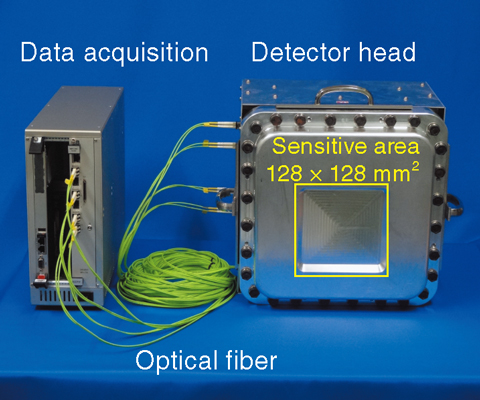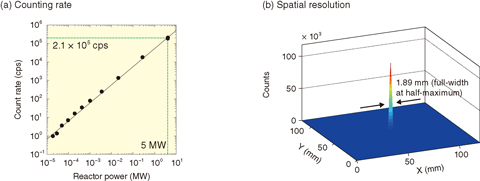
Fig.5-30 The developed gas-based two-dimensional neutron detector system using individual line readout and optical signal transmission

Fig.5-31 Experimental results for (a) counting rate and (b) spatial resolution using neutrons
We have developed a He-3 gas-based, two-dimensional neutron detector system for use in neutron scattering experiments using high-intensity pulsed neutrons at J-PARC. Fig.5-30 shows a photograph of the developed detector system. This system exhibits superior performance, including a counting rate greater than several hundred kilo-counts per second (kcps), an average spatial resolution of less than 2.0 mm (full-width at half-maximum, FWHM) with a standard deviation of 0.85 mm in the sensitive region, and a thermal neutron detection efficiency of 80%.
In general, a two-dimensional neutron detector has many signal lines along the vertical and horizontal axes, and the signal lines along each axis are usually connected together to conduct signal processing. The detector we have developed employs an individual readout method, and the signal of each line is individually amplified, shaped, and discriminated by front-end electronics. A short response time and high spatial resolution can be obtained using this method. Although it is necessary to increase the gas pressure to achieve higher detection efficiency, increasing this pressure decreases the amplitude of the output neutron signal, and consequently, discrimination between the neutron and background signals becomes difficult. Therefore, we developed a high-density multiwire detector element, a pressure vessel, multichannel front-end electronics, and optical signal transmission devices specifically for our individual-readout detector system. These devices enabled the detector system to achieve high detection efficiency, short response time, and high spatial resolution. The optical signal transmission could also be used to establish long-distance transmission between the detector head and the data acquisition device without any electrical noise.
The developed detector has a neutron-sensitive area of 128 × 128 mm2 and a pixel size of 0.5 × 0.5 mm2. As shown in Fig.5-31, this system exhibits an average spatial resolution of less than 1.9 mm (FWHM) in the sensitive region and a counting rate greater than 200 kcps, whereas commercially available neutron detectors have pixel sizes of 2.5 × 2.5 mm2 and exhibit counting rates of a few kcps and detection efficiencies of 50%. The thermal neutron detection efficiency of our detector is estimated to be more than 80% with a gas condition of 0.8 MPa.
The developed detector will contribute significantly to high-performance neutron scattering instruments at J-PARC. In particular, for neutron reflectivity measurements, the detector will enable not only specular reflectivity measurements but also off-specular reflectivity measurements such as those involved in grazing-incidence small-angle neutron scattering.